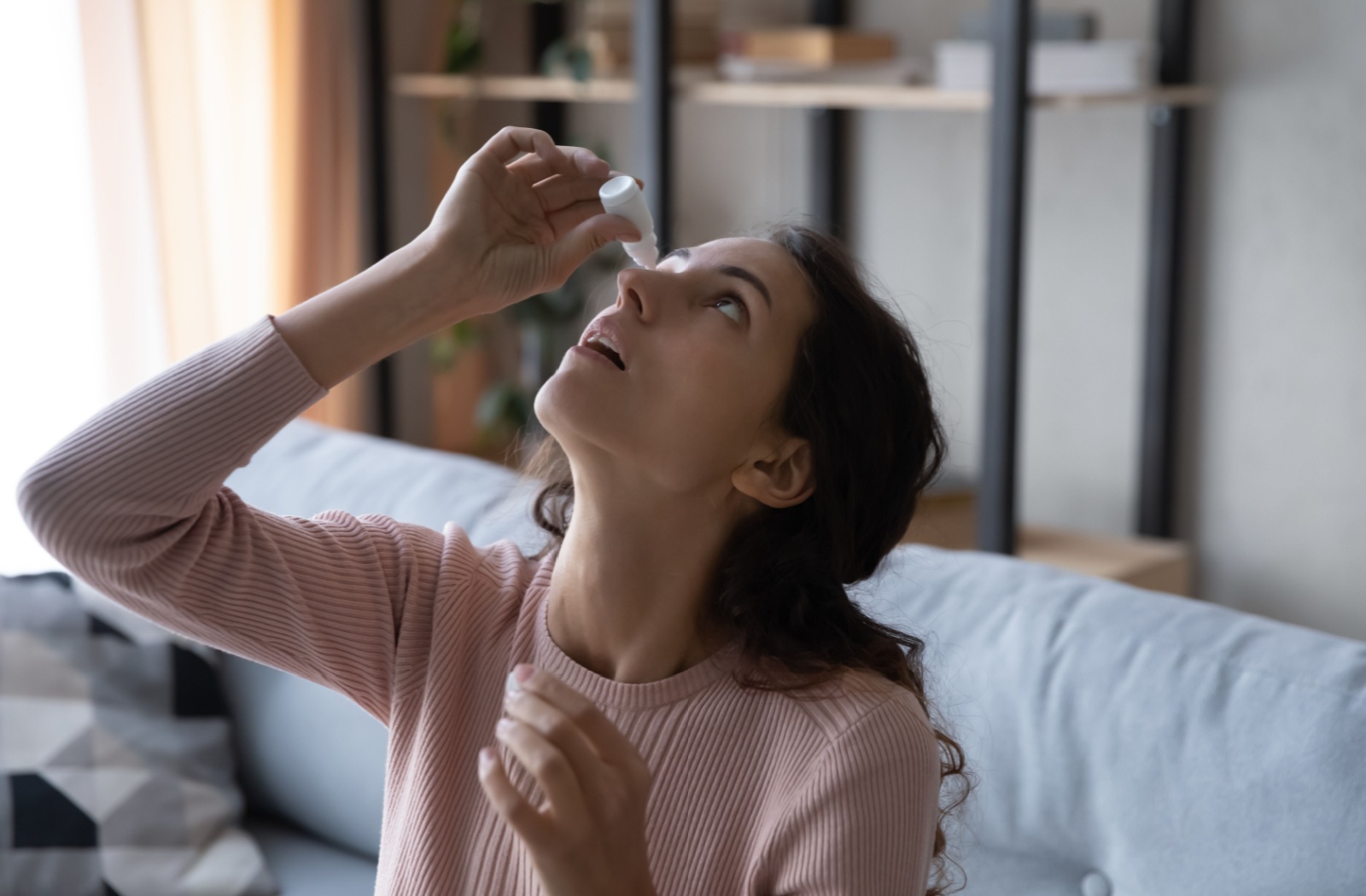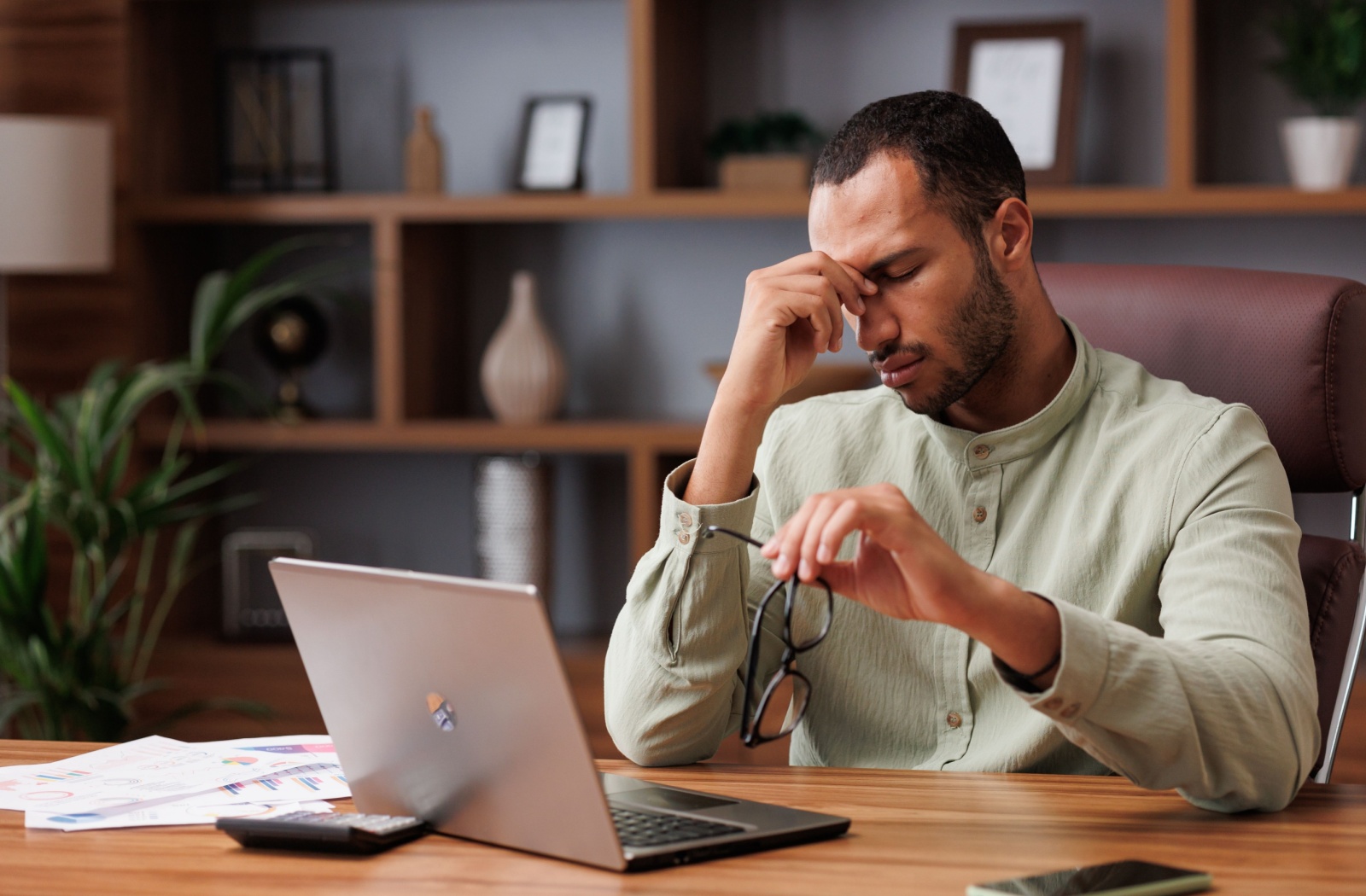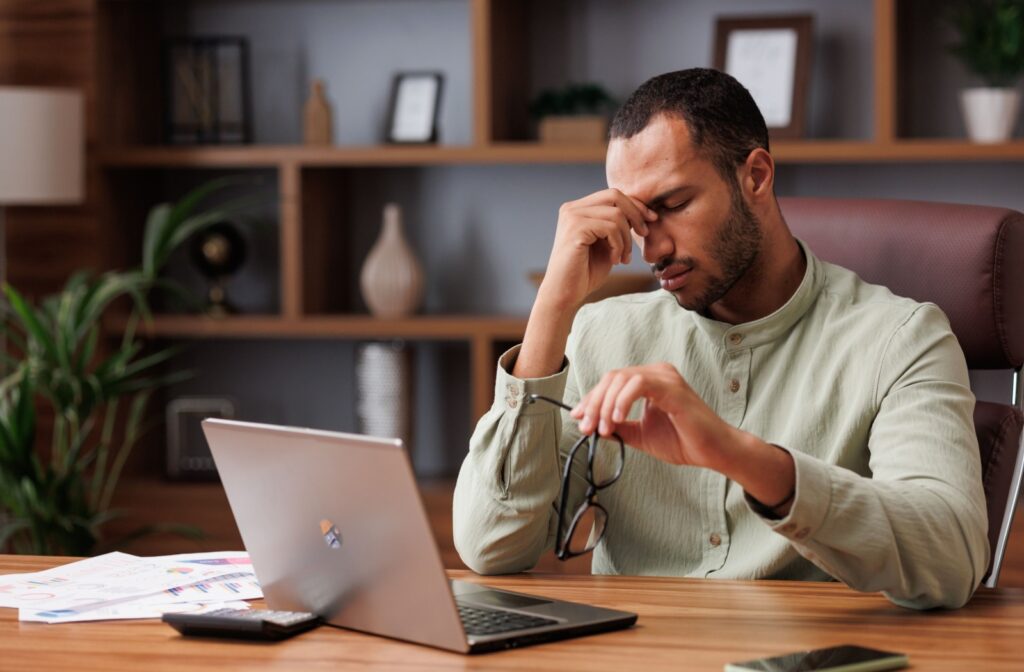Our productive and busy lifestyles keep us glued to projects for long periods. While our ability to remain focused on tasks for long periods is great, it can lead to eye discomfort.
The discomfort is unsettling, but eye strain is temporary. After taking a break or finishing our work, we should feel the effects of eye strain diminish after a few minutes or a few hours.
What is Eye Strain?
Eye strain is a common condition where your eyes feel tired, sore, or strained after long periods of focus.
This can occur from activities like reading, driving long distances, or spending extended periods on digital devices. The discomfort is usually temporary but can sometimes persist, affecting your daily activities.
The symptoms of eye strain can vary but they often include:
- Sore, tired, burning, or itchy eyes
- Watery or dry eyes
- Blurry or double-vision
- Increased light sensitivity
- Headaches
These symptoms are the body’s way of signaling that your eyes need a break. Ignoring them can lead to more severe discomfort.
Eye strain is primarily caused by extended periods of intense focus or exposure to challenging visual conditions. Understanding these causes can help you proactively prevent eye strain before it starts.
Common causes of eye strain include:
- Working on digital screens for long periods
- Doing activities that require focusing the eyes for long periods
- Poor lighting
- Uncorrected vision problems
- Stress or fatigue
Digital Eye Strain
In our progressively modern world, experiencing eye strain and fatigue has become increasingly frequent due to our constant use of digital screens and devices, resulting in digital eye strain.
According to the American Optometric Association, symptoms are similar to traditional eye strain but may occur more frequently due to the nature of screen use.
Digital eye strain develops when your eyes continually focus and refocus on the screens of digital devices. The high visual demands of staring at digital screens, combined with the frequent switching between screens and other tasks, can overwork your eye muscles. Additionally, the blue light emitted by screens can disrupt sleep patterns, leading to fatigue and exacerbating eye strain.
The symptoms of digital eye strain are largely the same as traditional eye strain, but they can be more pronounced due to the extended use of screens. Causes include:
- Prolonged screen time without breaks
- Poor posture while using digital devices
- Screen glare
- Small font sizes on screens
- Inadequate lighting or contrast on screens
How Long Does Eye Strain Typically Last?
Generally, eye strain doesn’t take days to go away. The effects of eye strain are relatively temporary. After refocusing your eyes, blinking, and taking a break, you should begin to experience some relief.
Temporary eye strain may last a few minutes to a few hours after taking a break or finishing your prolonged work.
Digital eye strain will go away within an hour of your last interaction with a screen. Taking frequent breaks and blinking often while working can help to reduce symptoms.
If you’re experiencing persistent eye strain, which doesn’t improve after treatment strategies, it may be a sign of an underlying health condition. In these cases, it’s suggested to visit your optometrist for a comprehensive vision exam.

Eye Strain Treatment & Prevention
Most individuals may experience temporary eye strain after a long day. While eye strain is annoying and causes discomfort, it’s not usually a serious condition. Temporary eye strain can be managed and prevented.
Eye strain is common, and leaving it unaddressed doesn’t cause long-term damage to your vision. However, you may continue to experience headaches, fatigue, dryness, and discomfort, all of which can impact your quality of life.
Treating Eye Strain
Temporary eye strain can be treated with a few lifestyle adjustments:
- Take Regular Breaks: Follow the 20-20-20 rule when focusing on work for prolonged periods. Every 20 minutes, look at something 20 feet away for at least 20 seconds. This helps your eye muscles to relax after focusing on a task for extended periods.
- Blink More Often: Studies demonstrate that you blink less while working on a computer. Blinking more often keeps your eyes moist, and reduces dryness and irritation especially while focusing on digital screens for prolonged periods.
- Improve Lighting: Make sure your work area is well-lit but free from glare.
- Use Artificial Tears: Some symptoms of eye strain include less frequent blinking, dry eyes, and overall discomfort. Using artificial tears helps to lubricate the eyes and provide additional moisture and hydration to the tear film.
- Adjust Your Screen: Head, neck, and shoulder pain are common symptoms of digital eye strain, because of poor posture while working on screens for extended periods. Adjusting your screen in a way that promotes proper posture helps to reduce some of this discomfort.
Preventing Eye Strain
Eye strain can be treated and prevented. To help reduce the risk of developing eye strain, consider:
- Optimizing Your Work Environment: Adjust your chair and digital screen to reduce strain on your neck and shoulders.
- Use Proper Eyewear: If you wear glasses, consider lenses designed for digital screen use, like blue light filters, to help reduce glare from digital screens.
- Screen Settings: Adjust your screen settings, such as brightness and contrast, to comfortable levels. High contrast values can lead to eye strain and fatigue.
- Regular Eye Exams: Visit your optometrist for routine eye exams. If you continue to experience eye strain and discomfort, it may be due to uncorrected refractive errors. Regular check-ups can help detect and correct vision problems early.
Book an Appointment!
Eye strain is a common but manageable ocular condition. It should only last for a few minutes to a few hours. If you’re experiencing persistent eye strain, it’s recommended to make an appointment with your optometrist to help identify the underlying cause.
Our team, The Eye Avenue focuses on treating the whole ocular concern, not just tackling the symptoms. Connect with us to schedule your next appointment.




